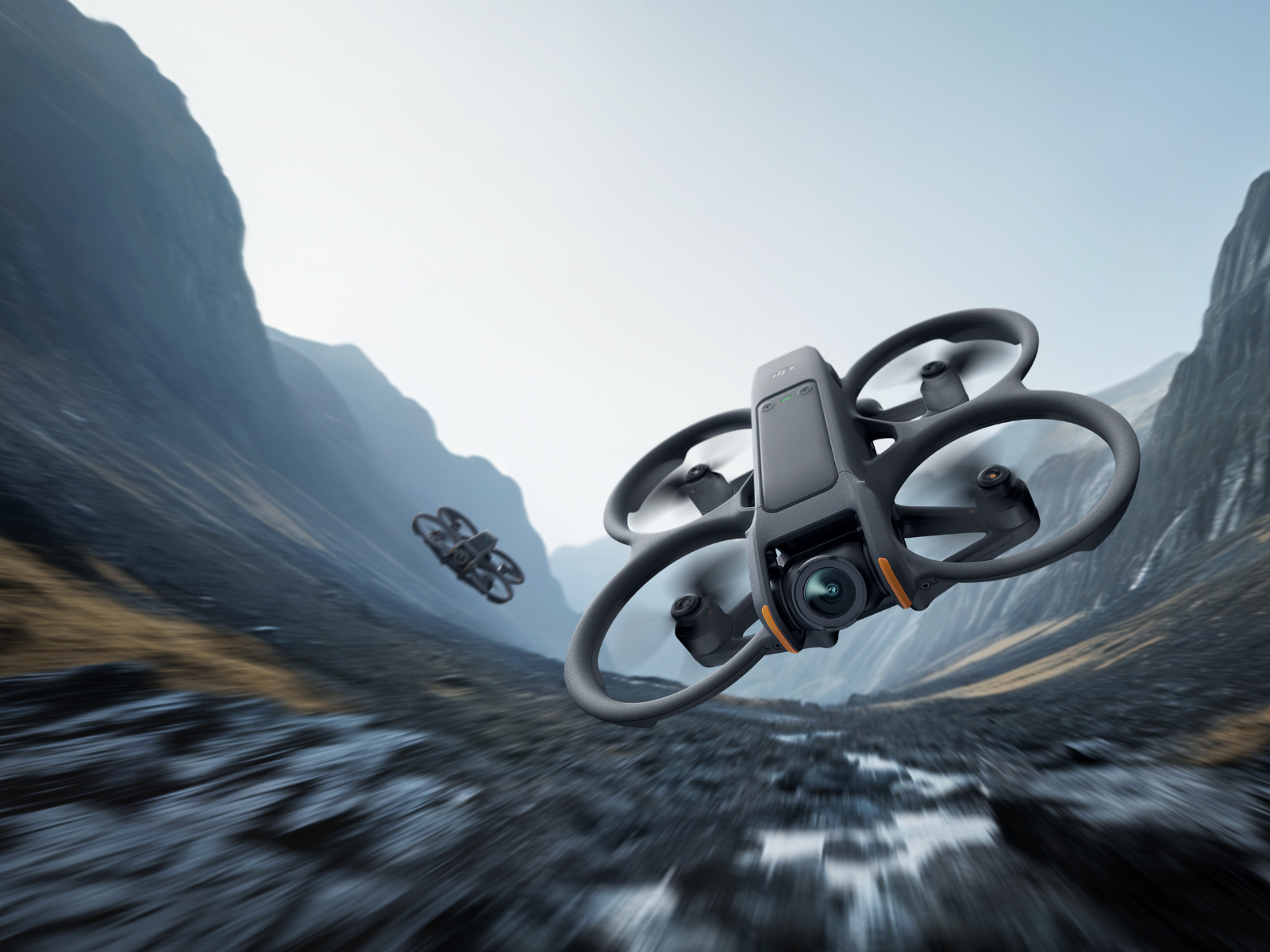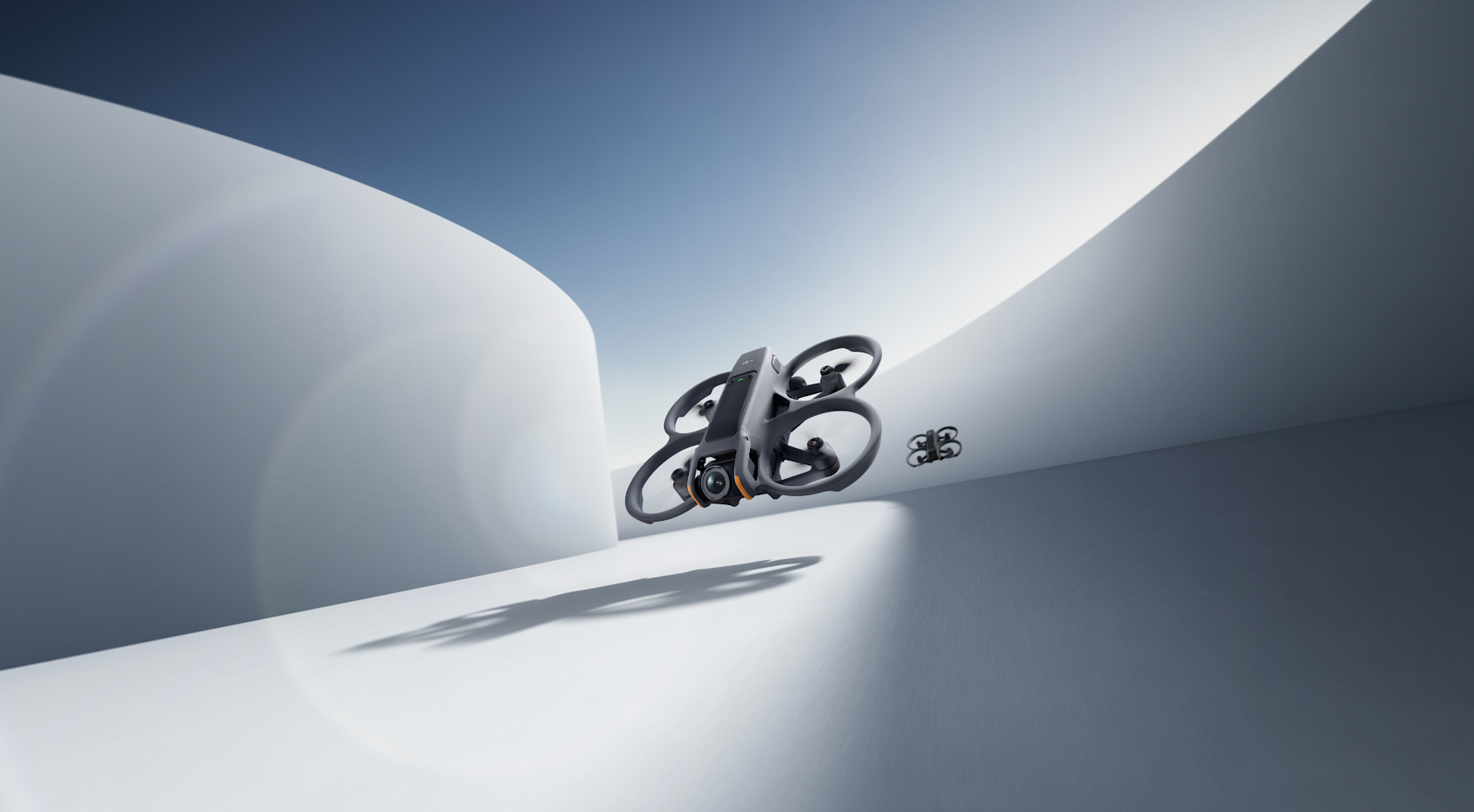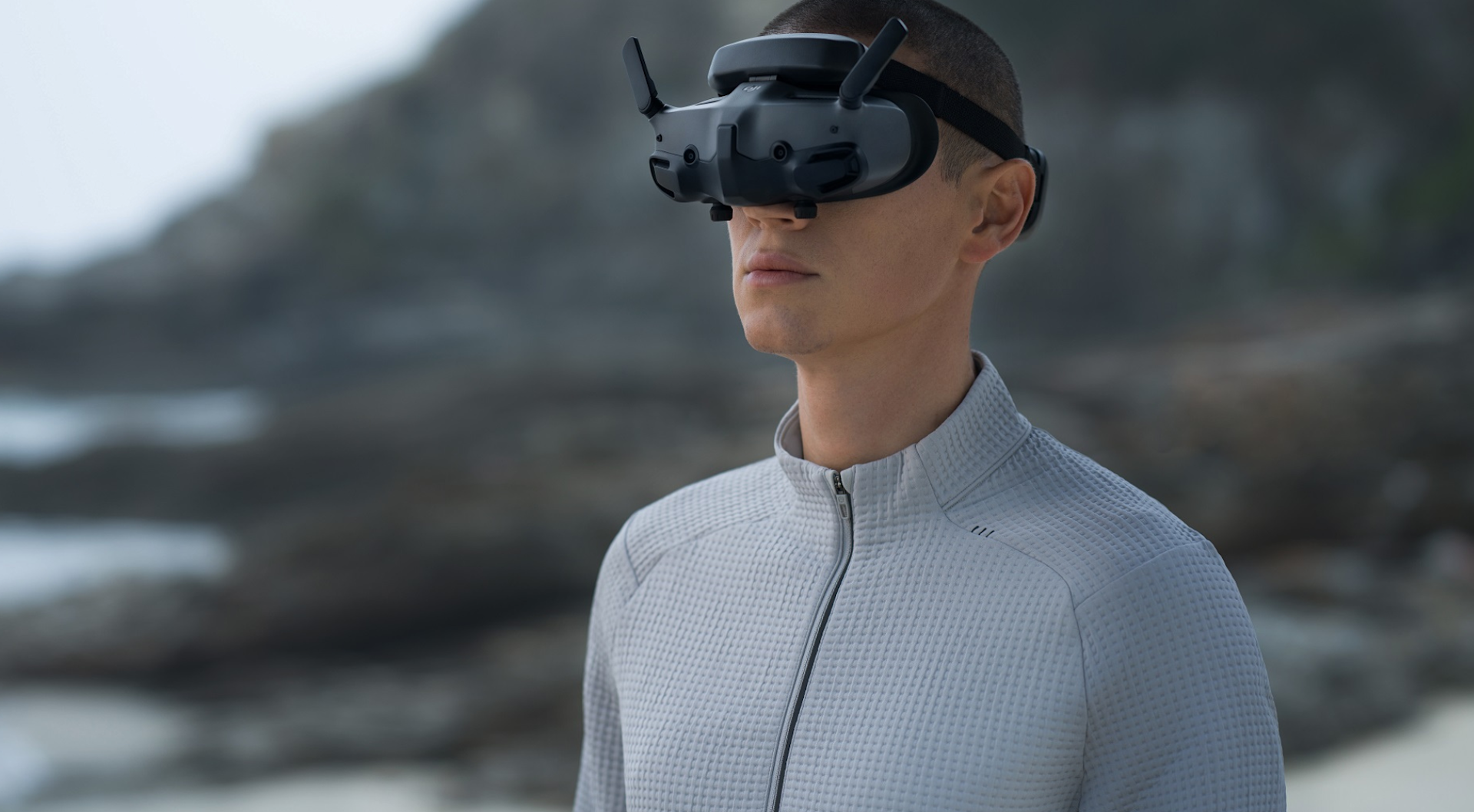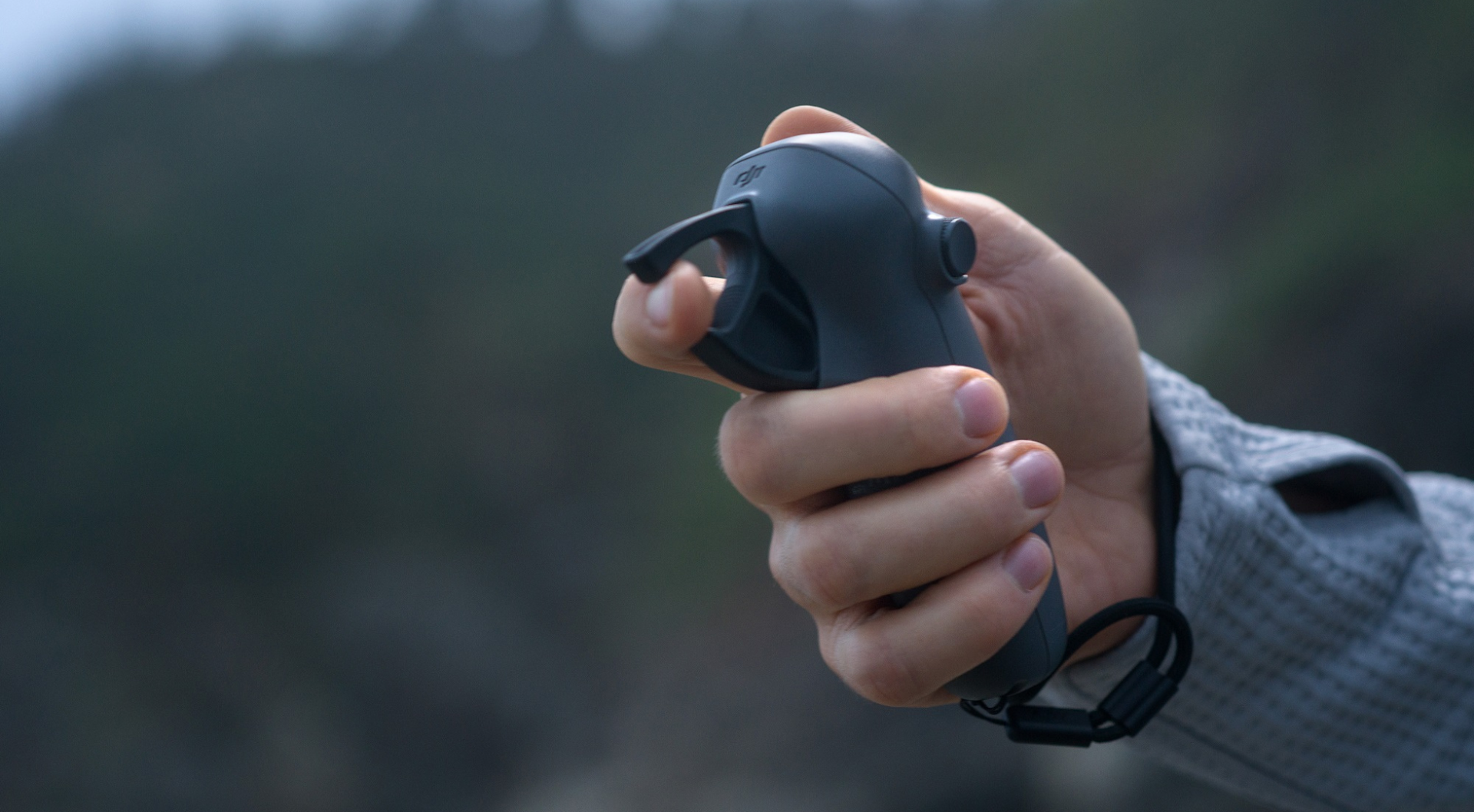
Products
How Does the New DJI Avata 2 Compare To the Orginal DJI Avata?
DJI has launched their latest FPV drone, the Avata 2, learn how it compares to the original Avata.
DJI has recently unveiled DJI Avata 2, their latest FPV drone.
The Avata 2 boasts improved flight performance, longer flight time, increased payload capacity, enhanced intelligent flight modes, and advanced safety features compared to its predecessor.
Take a look at our in-depth comparison as we evaluate the two models on their weight, flight time, intelligent flight modes, safety features and much more.
Dive into the various industry applications of the DJI Avata 2 and how it can elevate your operations.
DJI has released DJI Avata 2, the latest FPV drone boasting upgraded imaging, safety features, and battery life compared to its predecessor, the DJI Avata.
The Avata 2 introduces numerous advancements from the first Avata, such as the ability to capture super-wide 4K shots and intuitive motion control for seamless piloting. With integrated propeller guards and simplified ACRO flying, safety and excitement take precedence.
For an enhanced FPV experience, pair the Avata 2 with DJI Goggles 3 and DJI RC Motion 3. DJI Goggles 3 enable you to observe your surroundings without removing the goggles, enhancing both safety and immersion with Real View PiP (Picture-In-Picture) technology, and the DJI RC Motion 3 you can effortlessly execute challenging aerial acrobatics, enabling even novice users to perform spectacular flips, drifts, and captivating manoeuvres with ease.

Updates Include
Easily perform ACRO manoeuvres such as flips, rolls, and 180° drifts with seamless control and precision.
Experience enhanced colour grading flexibility with the 10-bit D-Log M Colour Mode, ensuring your footage achieves professional-grade quality.
Benefit from upgraded safety measures such as Downward/Backward Visual Positioning, guaranteeing precise positioning and enhanced stability during flight.
Extended flight time of 23 minutes, providing an additional 4 minutes of airtime, while the drone's support for PD fast charging ensures quick and efficient recharging.
Boosted Video Transmission Distance of 10km (CE), a 7km improvement from the first Avata.
Access nearly twice as much storage with the 46GB large internal storage, providing ample space for your files, and utilise the high-speed QuickTransfer feature for swift and efficient file transfers.
DJI Avata 2 Vs DJI Avata: Key Specifications
Look at the table below to see the differences in both models.
Feature | DJI Avata 2 | DJI Avata |
Weight | 377g | 410g |
Dimensions | 185mm x 212mm x 64mm (L x W x H) | 180×180×80 mm (L x W x H) |
Flight Time | 23 Minutes | 18 Minutes |
Internal Storage | 46 GB | 20 GB |
Ascent Speed | 6 m/s (Normal Mode) 9 m/s (Sport Mode) | 6 m/s (Normal Mode, Sport Mode) |
Hover Time | 21 Minutes | 18 Minutes |
DJI Avata 2 Vs DJI Avata: In-depth Comparison
Camera - Which camera is best for me?
The Avata 2 has significantly improved its camera quality compared to the Avata, now equipped with the ability to capture in 10-bit D-Log M Colour Mode, whereas the first Avata was limited to D-Cinelike Colour Mode.
10-bit D-Log M enables you to capture footage in bright and shadowy landscapes, and colours can be easily further enhanced in post-production, making it as true to life ass possible.
Meanwhile, D-Cinelike mode imbues the image with cinematic quality by applying a Lookup Table (LUT), which contains a predefined mathematical formula for image modification. Opting for this mode is better if you prefer not to manually adjust colours, as it provides a pre-set cinematic look.
D-Log M offers greater flexibility in colour grading due to its higher bit depth, while D-Cinelike provides a pre-set cinematic look suitable for those who prefer not to manually adjust colours. If your goal is to capture content that is as true to life as possible, D-Log M is preferable. However, if you prefer a more cinematic perspective to your footage and aren't keen on manually adjusting camera settings, then D-Cinelike is the ideal option for you.
When it comes to lenses both Avata drones have a CMOS Super-Wide-Angle camera the differences are in size and how many pixels it can capture, as shown in the table below.
The 1/1.3 lens offers a larger aperture compared to the 1/1.7 lens, resulting in better low-light performance and potentially sharper images. However, the 1/1.7 lens may provide a wider field of view, making it suitable for capturing broader scenes.
Camera Specifications
Feature | DJI Avata 2 | DJI Avata |
Sensor | 1/1.3-inch sensor Effective Pixels: 12 MP | 1/1.7-inch CMOS Effective Pixels: 48 MP |
Colour Mode | Standard D-Log M | Standard D-Cinelike |
Video Resolution | 4K/60fps HDR Videos | 4K/60fps Videos |
Video Transmission
The video transmission system has made significant advancements, transitioning from Ocusync 3.0+ to O4.
Ocusync 3.0+ supports a maximum distance of up to 10km between the aircraft and remote, whereas O4 extends this range to 20km. This enhancement with the Avata 2 drone provides users with greater flexibility in flying their drones over longer distances while maintaining uninterrupted live feed transmission.
Furthermore, the O4 system boasts reduced latency and improved live feed quality, streaming content in 1080p at up to 100fps. In comparison, Ocusync 3+ is limited to 1080p at 30fps.
Additional improvements include upgrades to communication bandwidth and maximum video bitrate. These enhancements result in smoother communication with aircraft and clearer footage, minimising buffering for pilots.
Despite the numerous enhancements, it's crucial to acknowledge that DJI Avata still retains a high-quality video transmission system. It remains capable of capturing excellent content and stands as the more budget-friendly option of the two drones. However, for superior content quality, the Avata 2 is the preferable choice.
Video Transmission Specifications
Feature | DJI Avata 2 | DJI Avata |
Video Transmission System | O4 | Ocusync 3.0+ |
Maximum Transmission Distance | 20km | 10km |
Live Quality View | 1080p @ 30/50/60/100fps | 1080p @ 30fps |
Communication Bandwidth | Maximum 60 MHz | Maximum 40 MHz |
Maximum Video Bitrate | 60 Mbps | 50 Mbps |
Intelligent Flight Battery
The Avata 2 represents a notable advancement in both size and power compared to DJI Avata. This improvement is exemplified by an extended flight time, with the Avata 2 offering an additional 4 minutes of hover time compared to the DJI Avata. Specifically, the Avata 2 boasts an impressive 21 minutes of hover time, surpassing DJI Avata's 18 minutes.
The extended battery life of the Avata 2 renders it better suited for longer flights, allowing it to cover greater distances without the need for frequent charging intervals. Additionally, the Avata 2 offers quicker charging times, particularly when coupled with the Two-Way Charging Hub [LINK IT], enabling a full charge from 0% to 100% in just 45 minutes. In contrast, the DJI Avata takes over two hours to reach a full charge. Despite this discrepancy in charging times, the power output of the DJI Avata, while lower than that of the Avata 2, remains comparable.
Despite its smaller size, the Avata 2 manages to pack a punch in terms of battery capacity, featuring a 2150 mAh battery compared to the DJI Avata's slightly larger 2420 mAh capacity. Additionally, in terms of energy output, the Avata 2 delivers 31.7 Wh@0.5C, while the DJI Avata provides 35.71 Wh@0.5C.
Moreover, the Avata 2 weighs less at 145g, making it a more lightweight option compared to the DJI Avata, which weighs slightly more at 162g.
Intelligent Flight Battery Specifications
Feature | DJI Avata 2 | DJI Avata |
Hover Time | 21 minutes | 18 minutes |
Battery Capacity | 2150 mAh | 2420 mAh |
Charging Time | 45 minutes (with Charging Hub) 1 hour 28 minutes | 2 hours 30 minutes |
Energy | 31.7 Wh@0.5C | 35.71 Wh@0.5C |
Weight | 145g | 162g |
DJI Goggles 3
The DJI Goggles 3 outshines its predecessor with enhanced video transmission capabilities, achieving a minimum latency of 24 milliseconds when paired with Avata 2. Its Real View PiP feature allows seamless switching between an interactive interface and live flight footage.
With Next-Gen 04 HD Video Transmission, users experience minimal latency, automatic band selection, and a maximum transmission rate of 60Mbps. Comfort is prioritised with low-pressure padding, one-tap defogging, integrated battery, and diopter adjustment, while visual performance remains exceptional with 1920 x 1080 resolution, 100 Hz refresh rate, and 700 nits brightness.

DJI RC Motion 3
The latest DJI RC Motion 3 presents notable improvements over its predecessor. Its reduced size enhances grip comfort and portability, while a newly integrated dial facilitates gimbal pitch control and display mode switching on the goggles.
With a refined two-stop throttle mechanism, flight control precision is significantly enhanced. Moreover, the introduction of an AR cursor streamlines parameter adjustments, ensuring a smoother operational experience overall.

Summary
Both Avata drones excel in capturing unique and high-quality footage while executing intricate manoeuvres with expertise. Ultimately, the choice between the two drones depends on the purpose of your flight, duration of airtime required, and desired level of detail in content creation.
The Avata 2 stands out with its advanced features, providing more professional-grade footage, faster transmission times, and a longer battery life.
Contact us to learn more about the Avata 2 and how it can improve your operations
